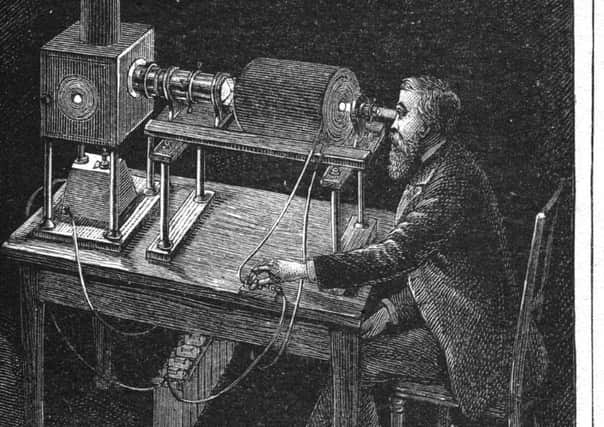Ray of light as Scots scientist James Clerk Maxwell inspires new find


Equations developed by renowned mathematician and physicist James Clerk Maxwell have helped to reveal how crystals can be manipulated to produce a distinctive form of light wave.
The phenomena, recently named Dyakonov-Voigt waves, could have a range of useful applications, such as improving biosensors used to screen blood samples or developing fibre optic circuits that transfer data more efficiently.
Advertisement
Hide AdAdvertisement
Hide AdScientists and engineers from the University of Edinburgh and Pennsylvania State University made the discovery by analysing how light, which travels in the form of waves, interacts with certain naturally occurring or man-made crystals. They found that Dyakonov-Voigt waves are produced at a specific region – known as an interface – where the crystals meet another material such as oil or water.
These waves can be produced only using certain types of crystal whose optical properties depend on the direction in which light passes through them, researchers say.
The team identified the waves’ unique properties using mathematical models that incorporated equations developed by Maxwell.
Since the mid-1800s, research on how light interacts with crystals has built on the work of Maxwell, the son of an Edinburgh advocate, who studied at the University of Edinburgh from the age of 16. He died in 1879, but his discoveries would help usher in the era of modern physics, laying the foundation for such fields as special relativity and quantum mechanics.
Maxwell’s most notable achievement was to formulate the classical theory of electromagnetic radiation, bringing together electricity, magnetism, and light as different manifestations of the same phenomenon for the first time.
Dyakonov-Voigt waves, named after two leading scientists, diminish as they move away from the interface – a process called decay – and travel only in a single direction, the team found.
Other types of so-called surface waves decay more quickly and travel in multiple directions.
Dr Tom Mackay, from the University of Edinburgh’s school of mathematics, who jointly led the study, said: “Dyakonov-Voigt waves represent a step forward in our understanding of how light interacts with complex materials and offer opportunities for a range of technological advancements.”
The study was published in Proceedings of the Royal Society.